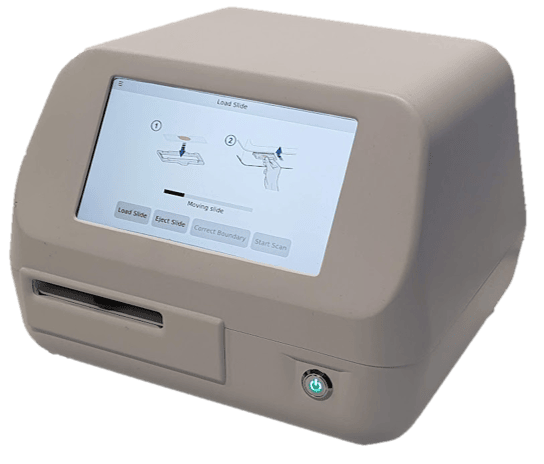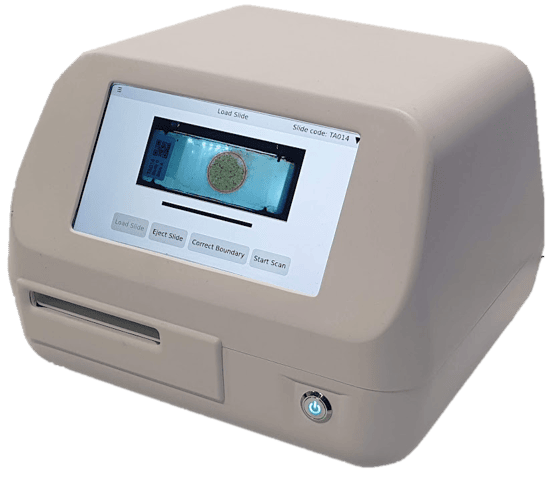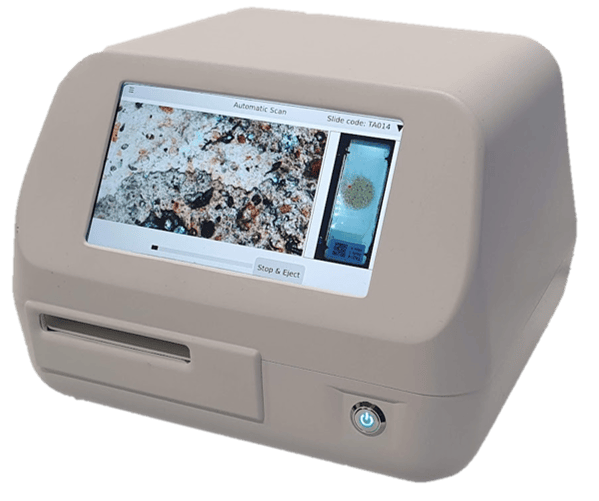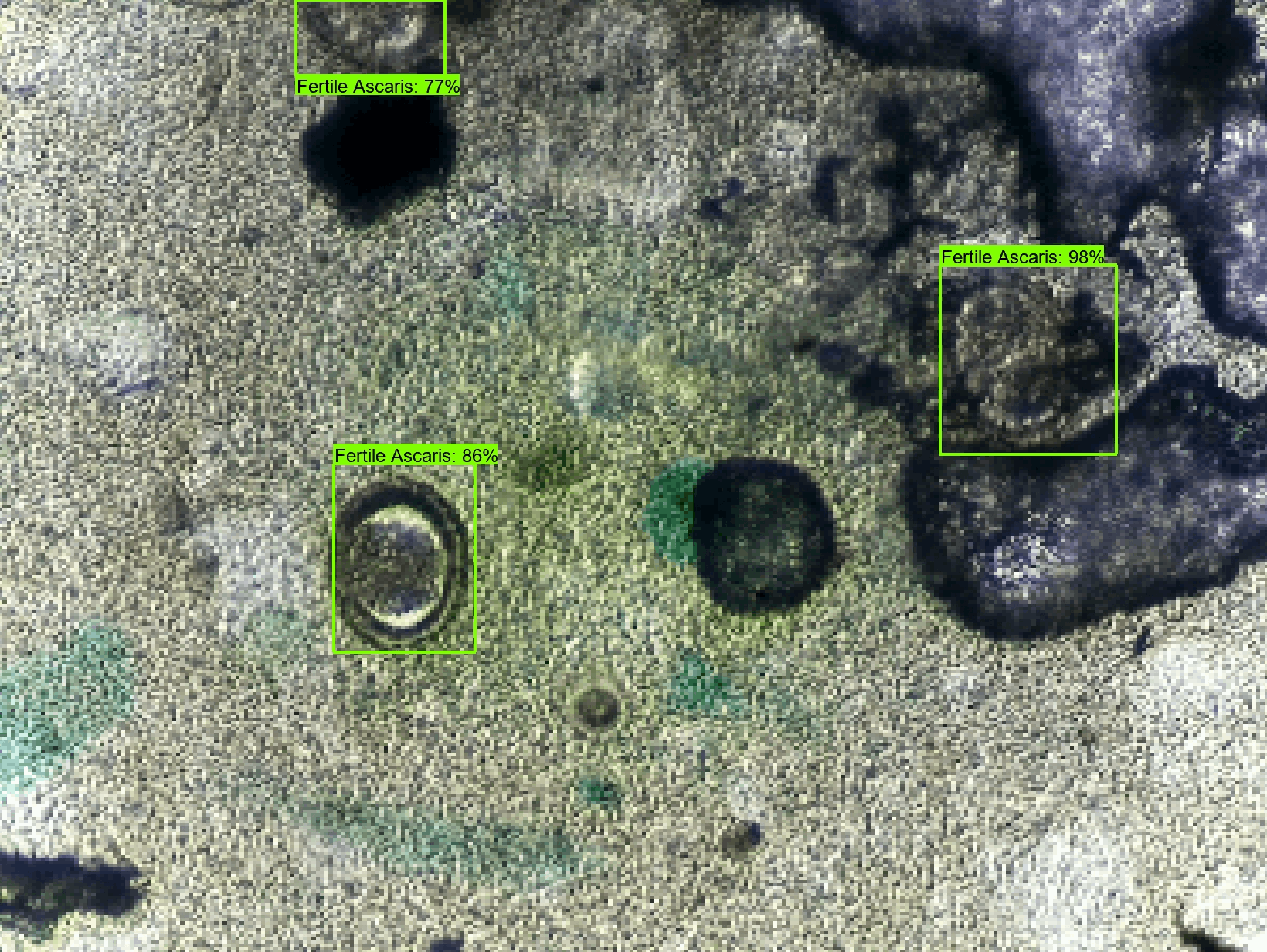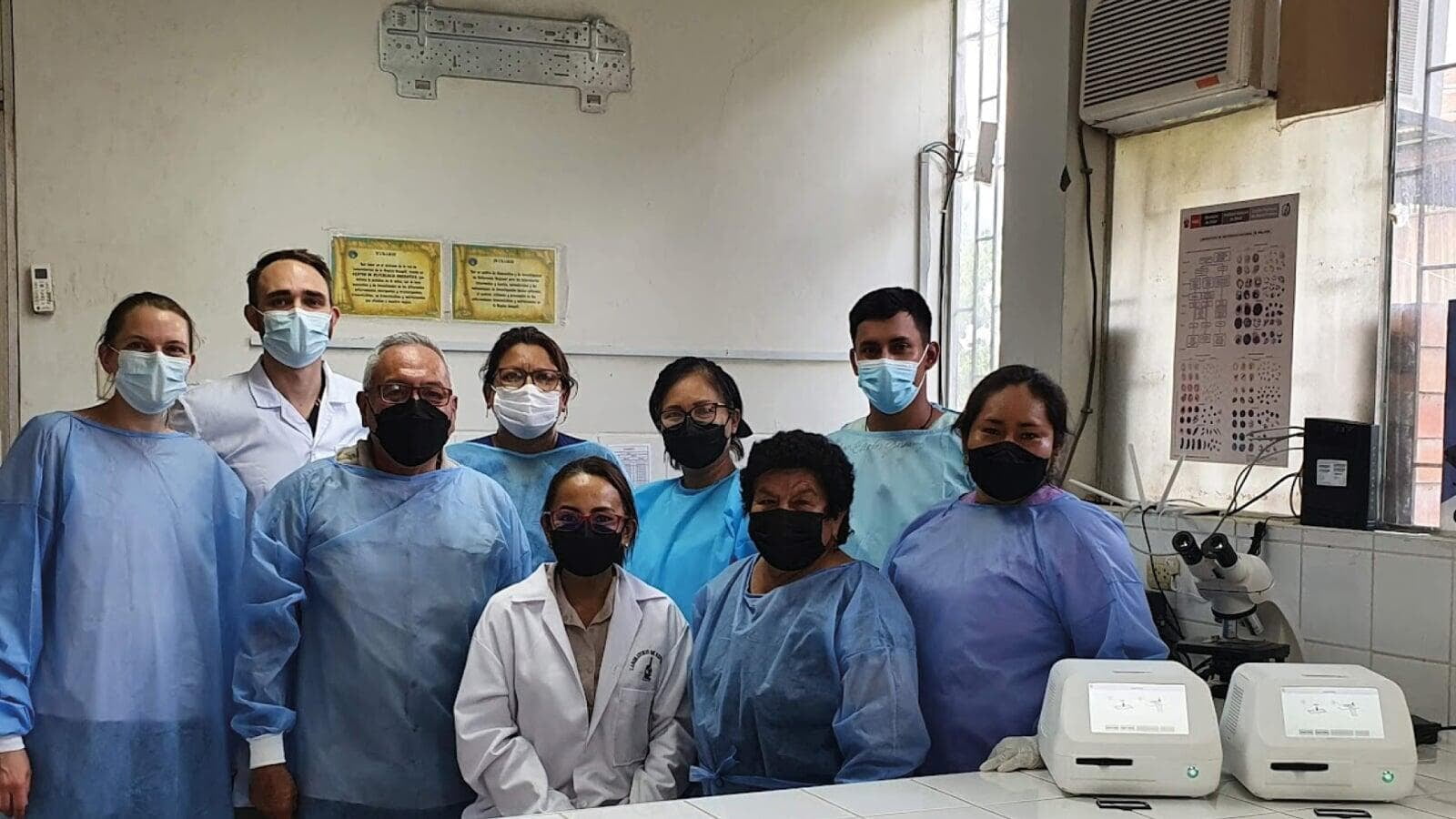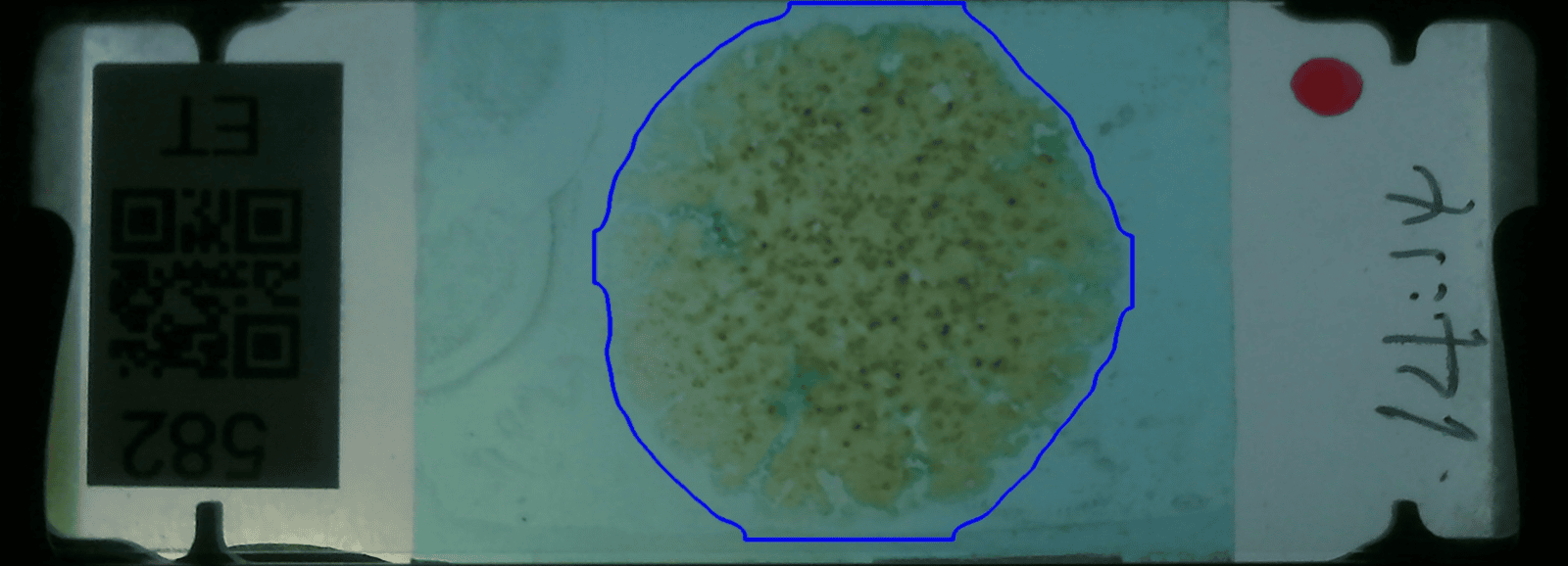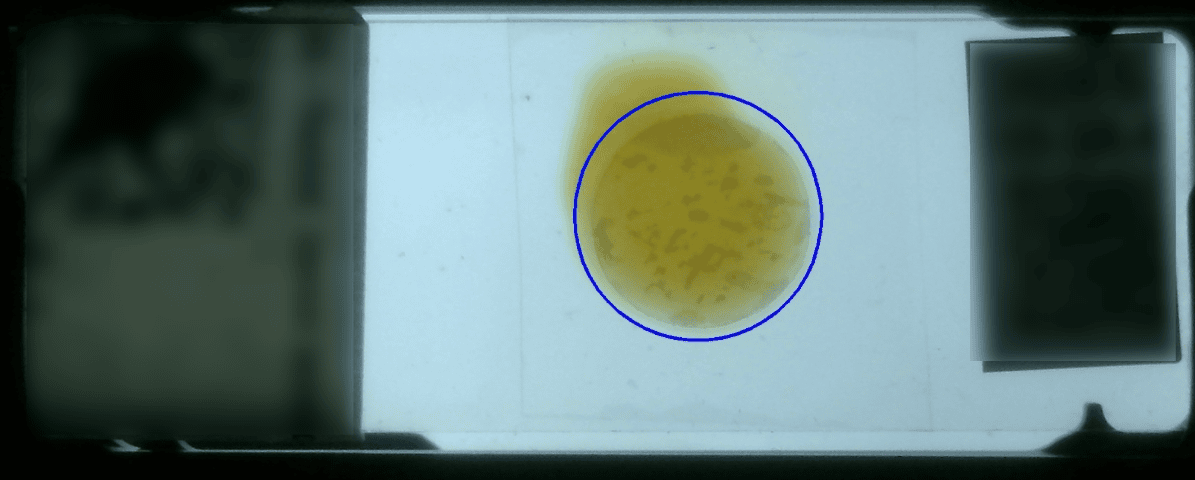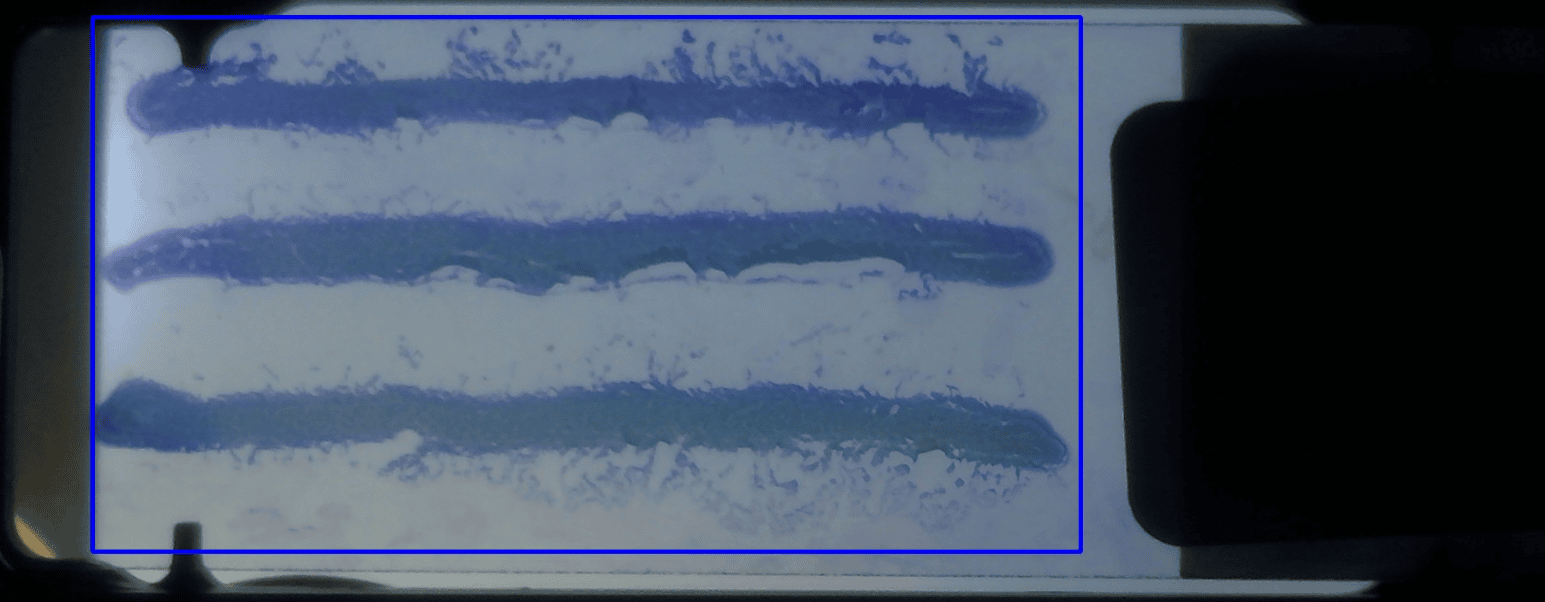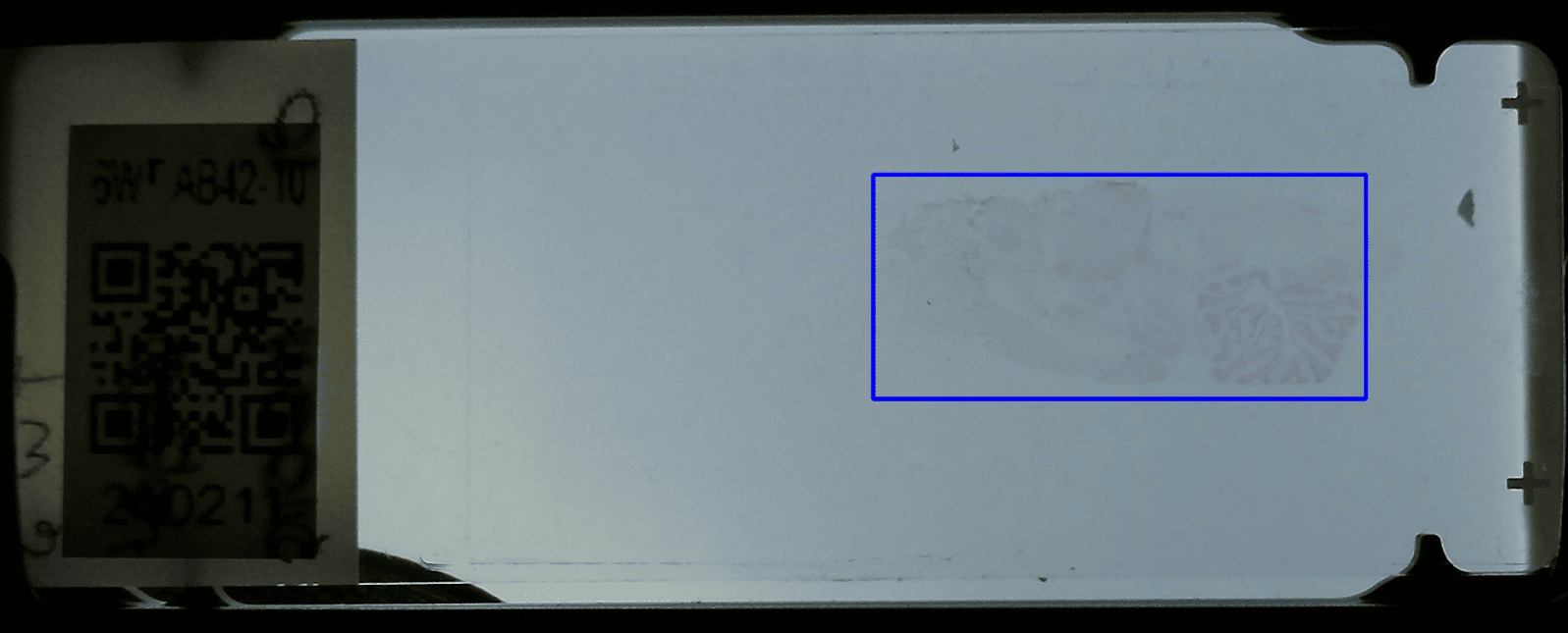AI Microscopy
- Automated Whole Slide Imaging: Effortlessly scan glass slides and generate digital whole slide images with our automated system.
- Remote Operation: Operate seamlessly in remote locations using power bank batteries, solar, or generators, independent of stable electricity.
- Offline AI Integration: Run custom AI models directly on the integrated computer without the need for an internet connection, perfect for research purposes.
Automatic stitching of whole slide images on device
Clinical Results
Artificial Intelligence-Based Digital Pathology for the Detection and Quantification of Soil-Transmitted Helminths Eggs
Janssen Research & Development, in collaboration with INMED ANdes and Enaiblers, conducted a non-interventional study to evaluate the diagnostic performance of the Enaiblers AI microscopy platform for detecting soil-transmitted helminth (STH) infections. The study was carried out in Ucayali, a remote Amazonian region of Peru, and involved 510 school-aged children (SAC) aged 5-14 years.
The research compared the traditional Kato-Katz (KK1.0) method with an AI-enhanced Kato-Katz (KK2.0) method. The results demonstrated that the Enaiblers AI microscopy platform (KK2.0) significantly outperformed the traditional method (KK1.0) in detecting Ascaris lumbricoides, particularly in low-intensity infections. The detection rates for Trichuris trichiura and hookworms were comparable between the two methods. At the 30-minute timepoint, KK2.0 identified 49.8% of samples as positive for A. lumbricoides compared to 37.6% with KK1.0. Similarly, at the 24-hour timepoint, KK2.0 detected 45.8% of samples as positive for A. lumbricoides compared to 37.1% with KK1.0.
Key Findings:
- Increased Sensitivity: The Enaiblers AI platform (KK2.0) detected a higher number of A. lumbricoides cases, especially in low-intensity infections.
- Comparable Detection Rates: Both KK2.0 and KK1.0 showed similar detection rates for T. trichiura and hookworms.
- Enhanced Diagnostic Accuracy: The AI platform improved the sensitivity and accuracy of STH diagnostics, offering a promising tool for better disease management.
Conclusion:
The non-interventional study highlights the potential of the Enaiblers AI microscopy platform in advancing STH diagnostics. By offering higher sensitivity, especially for low-intensity infections, the platform supports more accurate surveillance and effective treatment programs. These results underscore the importance of integrating AI technology into traditional diagnostic methods to enhance public health outcomes in underserved regions.

